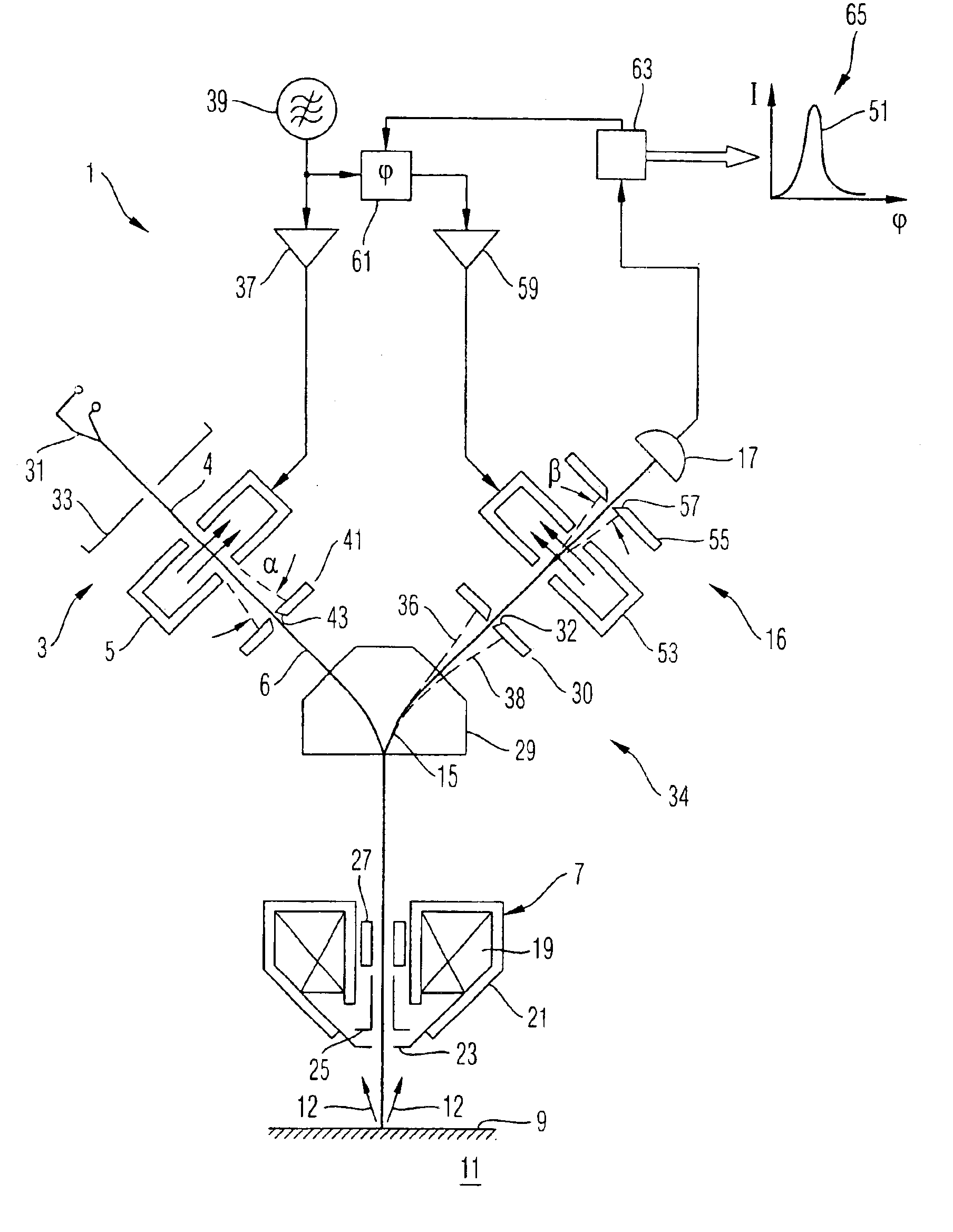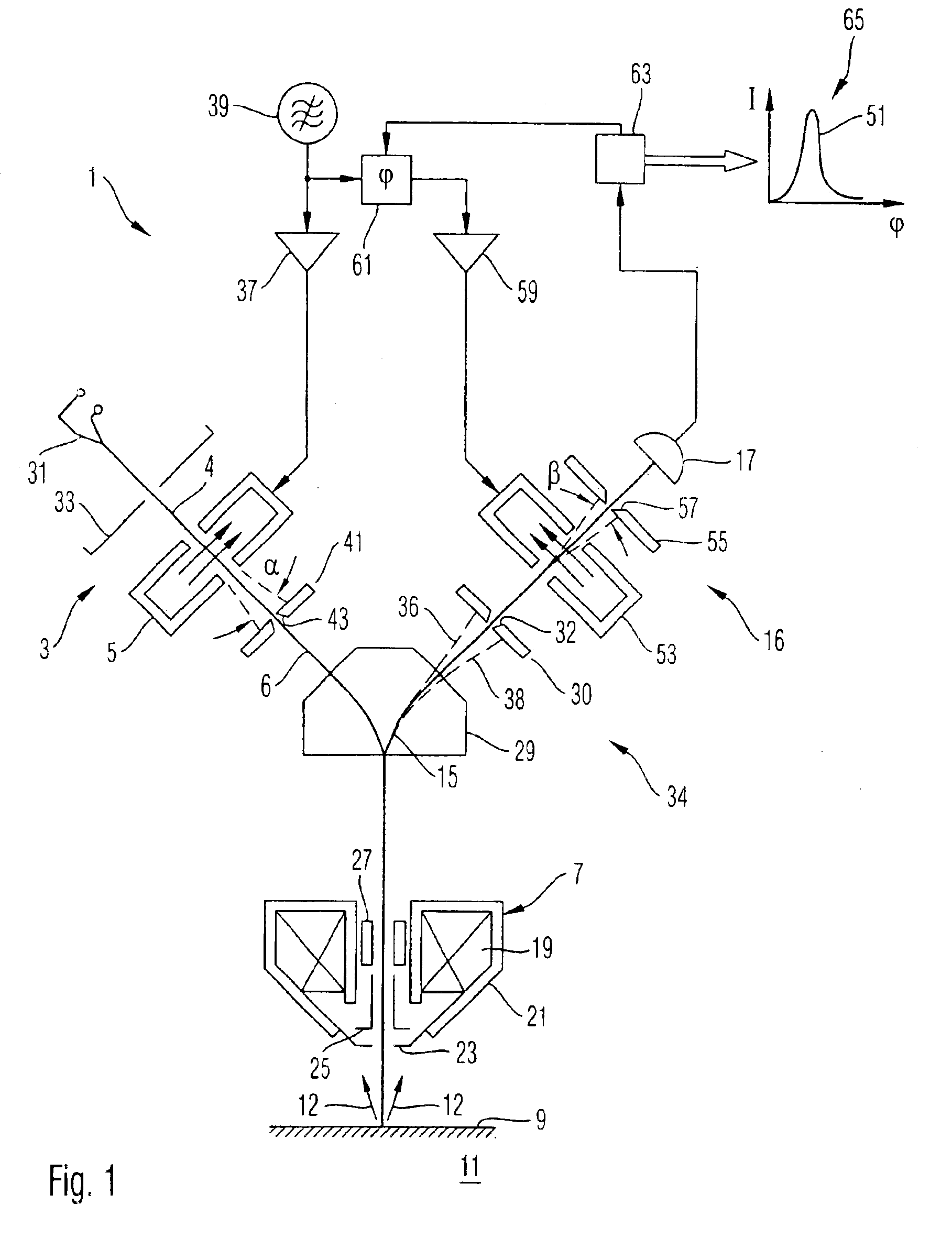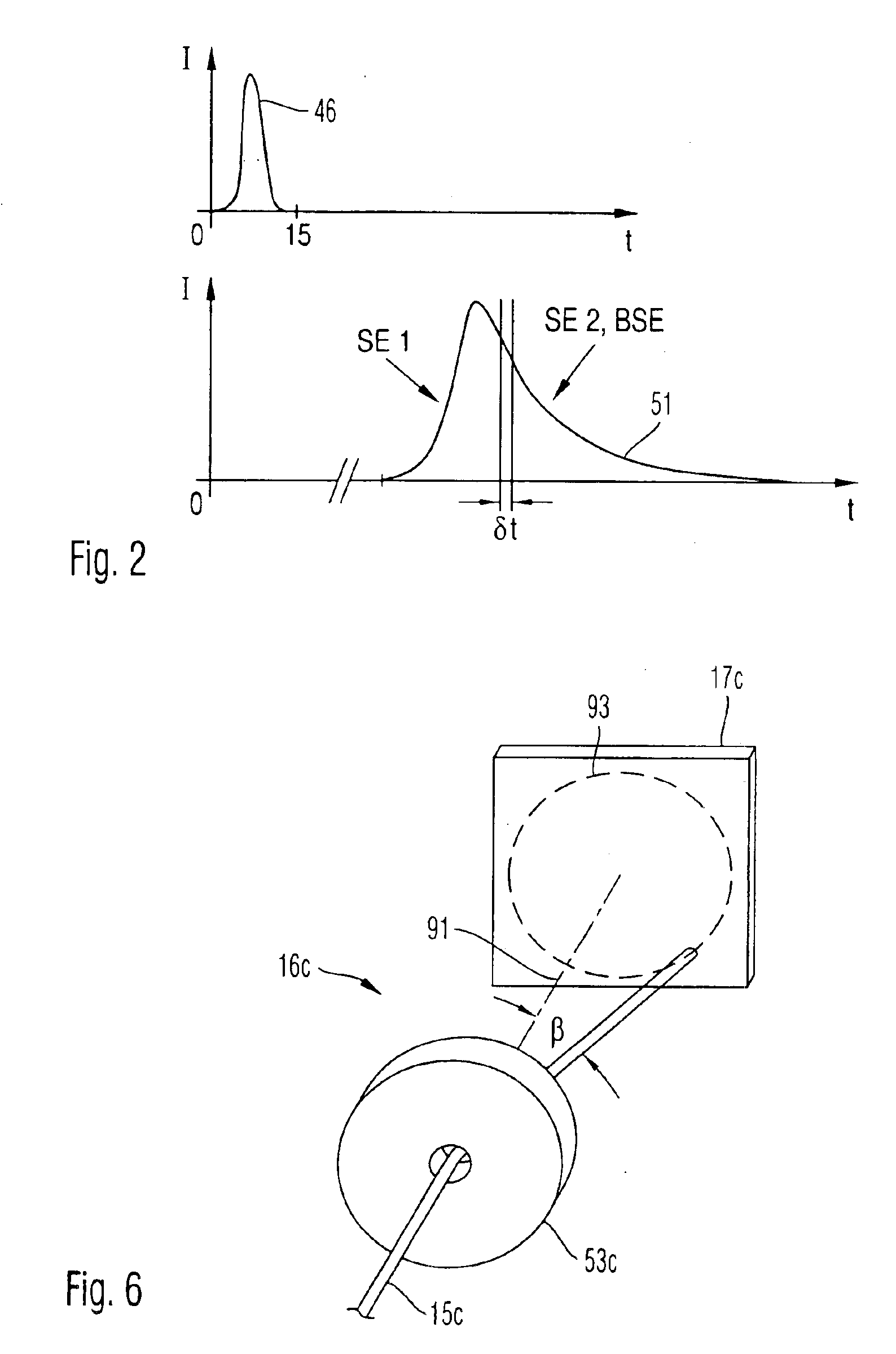Electron microscopy system, electron microscopy method and focusing system for charged particles
a technology of electron microscopy and electron microscopy, which is applied in the field of electron microscopy system, electron microscopy system and electron microscopy method, can solve the problems of insufficient compensation of the chromatic aberration of the focusing lens, etc., and achieve high temporal resolution
- Summary
- Abstract
- Description
- Claims
- Application Information
AI Technical Summary
Benefits of technology
Problems solved by technology
Method used
Image
Examples
Embodiment Construction
[0060]In the exemplary embodiments described below, components that are alike in function and structure are designated as far as possible by like reference numerals. Therefore, to understand the features of the individual components of a specific embodiment, the descriptions of other embodiments and of the summary of the invention should be referred to.
[0061]An electron microscopy system 1 shown schematically in FIG. 1 comprises an electron beam source 3 for generating a primary electron beam 6 and an objective lens 7 for focusing the primary electron beam 6 onto a surface of a sample 11 to be examined and arranged in an object plane 9 of the objective lens 7. The primary electron beam 6 focused onto the sample surface 9 generates secondary electrons 12 which emanate from the sample surface 9. A part of the secondary electrons 12 enters into the objective lens 7 and is shaped by same to a secondary electron beam 15, which eventually reaches an electron detector 17 of an electron det...
PUM
| Property | Measurement | Unit |
|---|---|---|
| time resolution | aaaaa | aaaaa |
| energy | aaaaa | aaaaa |
| time resolution | aaaaa | aaaaa |
Abstract
Description
Claims
Application Information
 Login to View More
Login to View More - R&D
- Intellectual Property
- Life Sciences
- Materials
- Tech Scout
- Unparalleled Data Quality
- Higher Quality Content
- 60% Fewer Hallucinations
Browse by: Latest US Patents, China's latest patents, Technical Efficacy Thesaurus, Application Domain, Technology Topic, Popular Technical Reports.
© 2025 PatSnap. All rights reserved.Legal|Privacy policy|Modern Slavery Act Transparency Statement|Sitemap|About US| Contact US: help@patsnap.com



